Tsitsipas def. Khachanov 7/6 6/4 6/7 6/3
Tsitsipas made this harder than it needed to be, having served for the match at 5-3 in the third and blowing two match points at 6-4 in the tie-breaker. The Greek had the edge in movement, serve, forehand, and forecourt play, and Khachanov’s backhand really let him down in key moments—especially in the first set tie-breaker where he made four errors off slow, heavy balls, to put himself behind early on. The warmer daytime conditions probably helped the Greek with his heavier topspin game getting Khachanov in uncomfortable positions, but overall the match played out as predicted, given Khachanov had lost 13 in a row against top-5 opposition, and 22 in a row against the top-10 coming into this match.
Forehands1
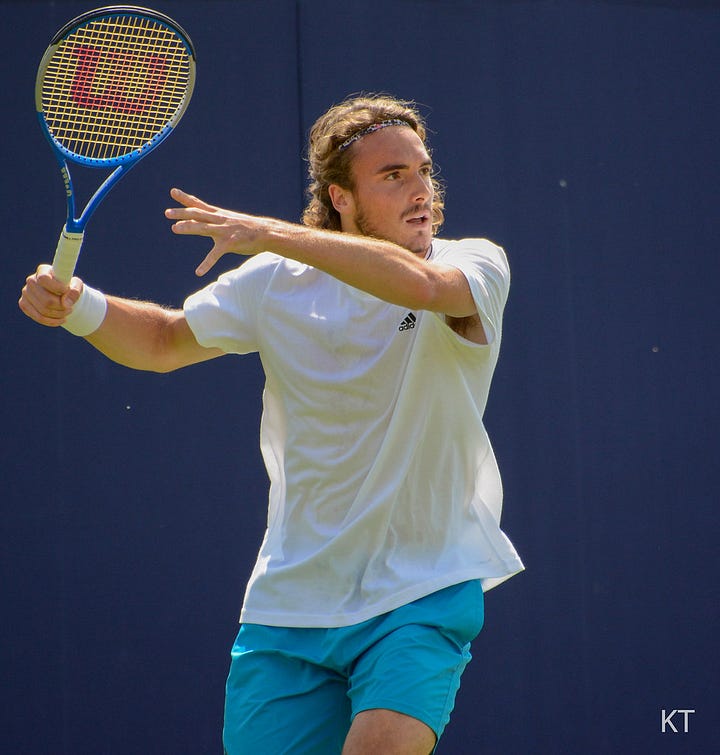

Tsitsipas’ forehand was the best shot on the court, as has been the case for all six of his AO matches. He attacks and defends well off that side and is comfortable handling both pace and spin. Khachanov’s forehand—while big from the middle of the court—suffered immensely on return and when stretched.
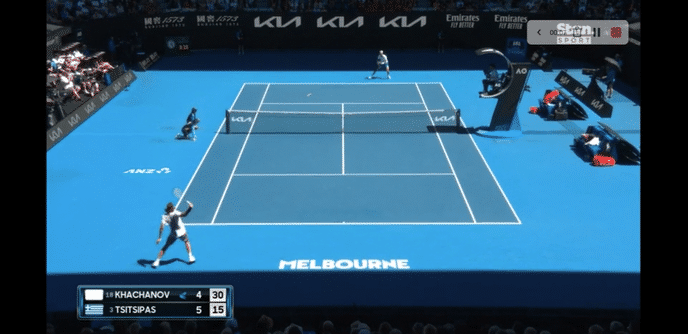
By my count Tsitsipas won every point in the first set when he served to the Khachanov forehand, largely because the Russian chipped returns into play that Tsitsipas was able to dictate with his forehand, or the Russian simply missed.
For Tsitsipas, the forehand is the shot that needs to be firing on all cylinders if he is to have a chance come Sunday against Djokovic. The change of direction ball—especially taking the forehand inside-in—will be key to getting Novak a little uncomfortable.

Backhands
Both Tsitsipas and Khachanov struggle with their backhands for different reasons. Khachanov’s choked-up grip coupled with a short outside set-up is adept at trading low hard balls, but anything slow, high, or heavy is much harder for him to handle. Such a short swing in terms of lever length and swing length means there is very little racquet-head speed. As the commentator mentioned after the tame second-serve miss below:
“It’s a stubby old backswing. When it’s high it’s tough for him to generate pace. ”
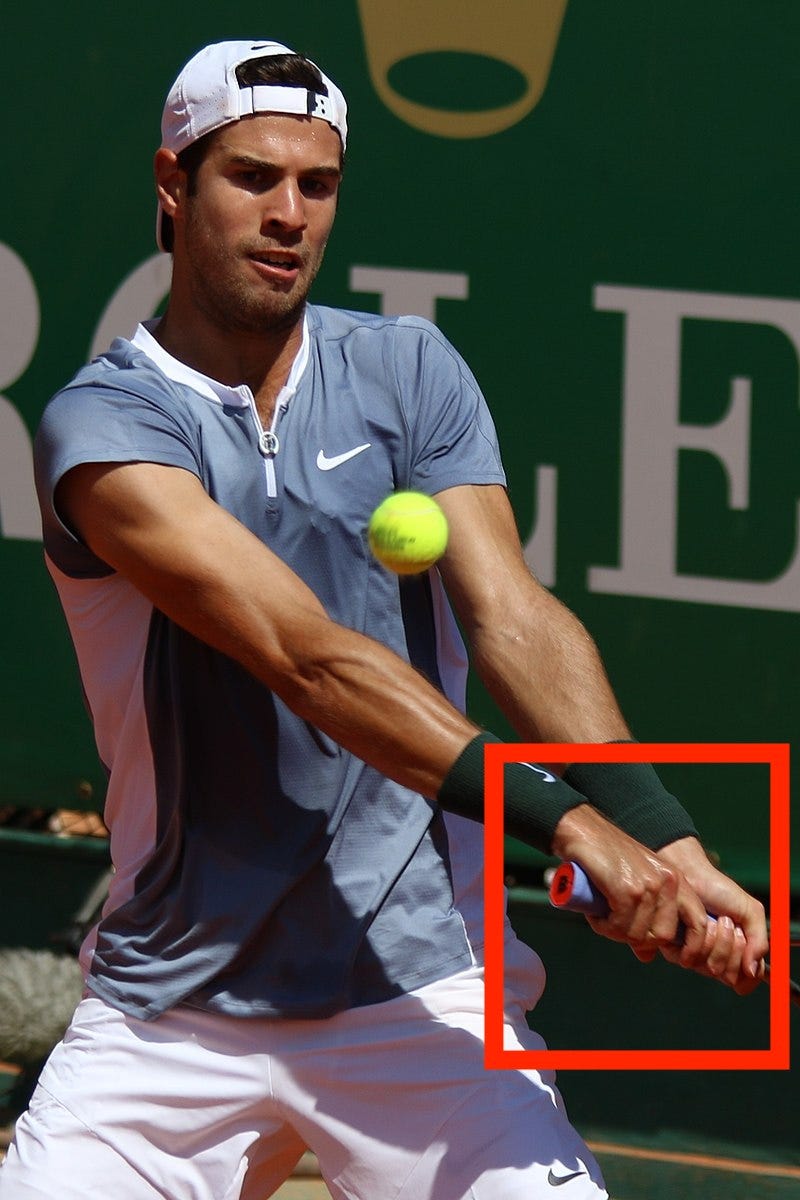
An idea of the mismatch in Khachanov’s contact versus Tsitsipas’ backhand trajectory showed the Greek’s ball a good foot above the Russian’s ideal zone:
And based on Khachanov’s groundstrokes technique the return performance was completely in-line with what you would expect: the forehand struggling with 1st-serve pace and the backhand struggling with 2nd-serve height, spin, and lack of pace. It’s very hard winning matches if you only make 60% of second-serves that come into your backhand. These weaknesses made Tsitsipas’ serve tactics relatively straightforward; he could target the forehand on first serves, and feel safe hitting kick serves into the backhand.

For Tsitsipas’ backhand, the reverse is true; he loves the slower and bouncier ball that gives him time to really unload (like most one-handers). However, when he is rushed (on first-serve returns and when on the run) he struggles to handle pace, in large part because his slice is really subpar for a single-hander; his takeback is far too abbreviated for rally ball slices and his wrist seems to be in a neutral position whereas most great slicers tend to extend the wrist and use a lot of radial deviation. This means he often has little spin and little ability to stop it from floating high; he can't bite the ball well and he can't keep it low consistently.2




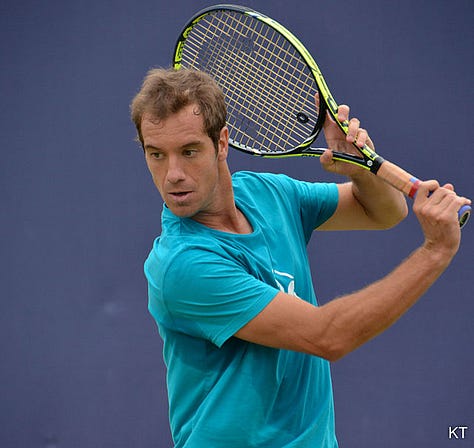
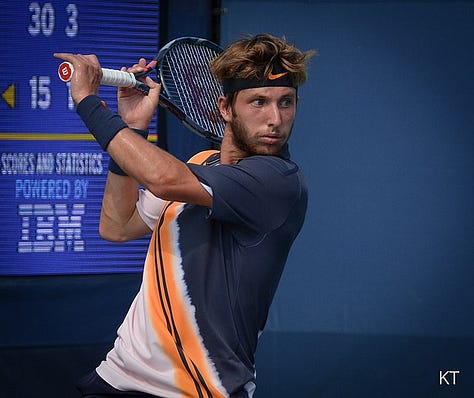
Tsitsipas’ topspin one-hander is also prone to shanks, and I don’t have a great answer as to why other than I think less extreme backhand grips struggle in the modern game more. Less moving parts (within sound mechanics) is always my preference.3
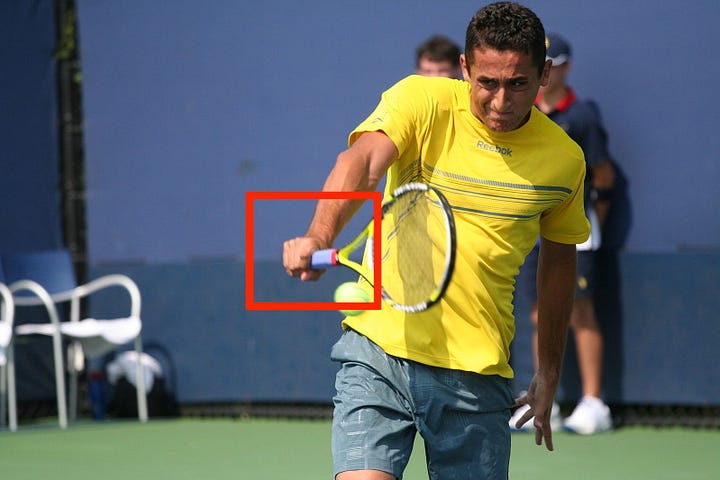
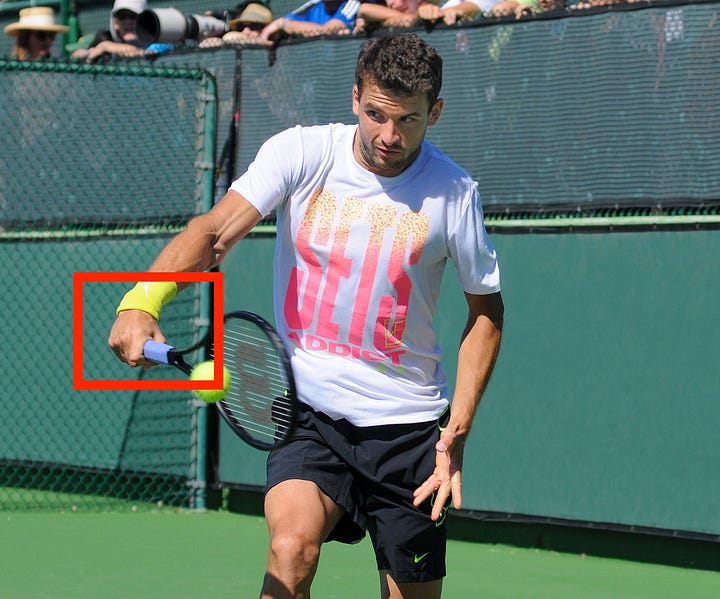
A look at the official stats:
While Tsitsipas dominated the shorter rally lengths, once the rally extended the odds tipped in the Russian’s favour. That’s not a great sign when you’re about to play Djokovic.
Some commentator excerpts from throughout the encounter:
Mark Petchey: “There does feel a sense around Khachanov when he plays that perhaps the expansiveness of his shotmaking isn’t there—it’s a little narrow. His angle of attack that comes in at times. You know we reeled off the list of matches he has lost in a row against top-five players—13 in a row, he’s lost his last 22 against top-tenners…”
Wally Masur: “It’s not easy power. Even though he [Khachanov] had made a lot of winners coming into the sem-final on the backhand side it’s because he can kind of redirect off pace, but actually trying to generate pace off his two-hander isn’t that easy.”
Wally Masur: “You know what’s interesting boys as I’m sitting on the side of the court here, you know, is…watching Novak over the last few days is just how accurate he is. And sometimes I think, Khachanov, he has a ball to do something with—and there’s power—but there’s not always accuracy to match.”
Wally Masur: “I gotta say sitting courtside so close to the action, I’m a bit surprised about how he [Khachanov] just doesn’t generate pace as well as I had expected from either wing really.”
Djokovic def. Paul 7/5 6/1 6/2
Robbie Koenig: “When I saw him [Djokovic] in Canada in 2007, when he went on to win that second Masters 1000 after Miami earlier on in the season…When he beat Roddick, Nadal, and Federer I could not believe how well he changed direction on the ball. It was unbelievable.”
This could have been 1, 1, and 2 if Novak hadn’t blown his 5-1 30-0 first-set lead. The Serb has now crushed #25 De Minaur, #5 Rublev, and #19 Paul emphatically. In fact, their game scores all combined barely scrape together three sets. What’s scary is that it was a pretty ordinary performance last night for much of this match for Djokovic, who was uncharacteristically missing backhands more than usual.
After a shaky opening game, Djokovic went straight to work, breaking Paul’s serve and commencing the job of effortlessly tearing apart the American’s defense—despite his good wheels—with line balls and depth.
Forehands
Paul, Like Khachanov, has that distinctly new trend forehand with the elbow high and the racquet flared to the side with a flexed wrist.
Koenig and Philippoussis remarked on it early on after an error:
RK: “What about the technique on the forehand? Notice how his wrist is out in front [flexed] of the racquet before he hits the forehand.”
MP: “It’s different. It’s different. But he gets some nice whip at it. Some wrist action.”
RK: “Does it actually matter? Does all that matter is when you make contact with the ball?”
MP: “I agree Robbie. Everyone’s different but that contact point is important.”
Courtside Commentator: “If you’re going to have a takeback like that you want to be quick to get the racquet face back to vertical upon impact otherwise you’ll make some unforced errors and that’s what happened tonight. The ball has gone there with pace and he hasn’t been able to handle it.”
I think it does matter. And I think the difference is noticeable if you care to look closely enough at who are the consistently great ball-strikers on that wing.
Djokovic has a forehand that I contend is the simplest way to play the game; a perfect tradeoff between control and power and able to wield a heavy racquet.
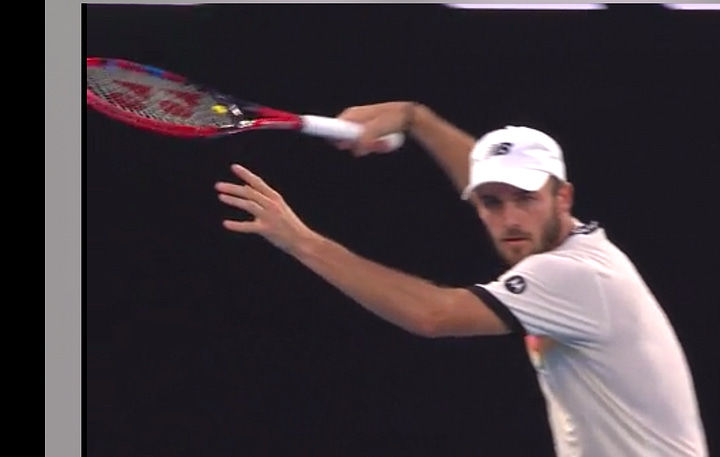

Despite missing more regularly, Djokovic still managed to squeeze out a lot of misses from Paul. Interestingly, the American had a slight edge in the longer rallies, but Djokovic was clearly playing with more aggression than is typical of him, and the Serb dominated both shorter rally categories emphatically.
The pressure is non-stop. Take a look at Djokovic’s returns so far this tournament: averaging over 100km/h on the first-serve return and winning nearly 70% (!) of points when he lands it deep. This is going to make Tsitsipas’ first-strike game much harder to implement on Sunday. Djokovic does not chip many returns, unlike Khachanov.
AO Final: Keys to the Match
When Djokovic wins the first set at the Australian Open he is 80-1.
The only loss? Against Stan Wawrinka in the quarterfinals in 2014. Their 2013 and 2014 AO matches are some of the purest baseline hitting you will ever watch. Both blokes just murdering the ball with consistency. While Tsitsipas has a forehand that rivals that of Wawrinka’s, the backhand pales in comparison. Not only did Stan have a reliable block to get into a lot of return points, but his backhand was also far more lethal in terms of accuracy and power in rallies. He was able to hit through a prime Djokovic.
So, Tsitsipas must win the first set to have a chance. To do that the Greek needs to make it a match of forehands, as I touched on in their recent encounter in Astana. Using his hard and heavy forehand to go back behind Djokovic is his best chance to hold his own from the back. Topspin backhand exchanges will kill him. Slicing the backhand crosscourt at least keeps the ball low and starves Novak for pace.

On top of this Tsitsipas will have to red-line the serve. I thought Kyrgios above 70% in the Wimbledon final would be tough to handle, but Djokovic worked his way into many of the Aussie’s service games there, despite Kyrgios serving at 73%. The need for a huge forehand and serve performance is entirely due to Tsitsipas’ backhand lacking penetration on hard courts. It’s heavy, but it doesn’t go through the court, and with a night final the bounce will be blunted. As already mentioned, Tsitsipas’ slice is still not a reliable shield on par with others from the gallery above. A quote from the Astana piece:
“If you don’t have a strong AD side in the men’s game today, you have built your game on sand; the top players will ruthlessly expose you. As good as Tsitsipas is, his backhand side will forever be the castle of sand until his slice develops into something world-class.”
I stand by that statement and feel he will need to produce something very very special to have a chance on Sunday with his current game.
For Djokovic, Sunday demands an ordinary performance on a special day. His bread-and-butter level will win this match in 3 or 4 sets. His serve is like his baseline game now; too slow to register a mountain of aces, but too accurate and just fast enough to pile up a huge percentage of unreturned serves or easy short balls. And of course, his ability to take the ball line with depth is going to give him too many free points and too many looks at short balls:

Let’s hope both bring their best and put on a show.
Backhand slice photo credits. Dan Evans, Dominic Thiem, Grigor Dimitrov, Richard Gasquet, Corentin Moutet.
Almagro backhand by robbiesaurus. Dimitrov backhand by Christian Mesiano.



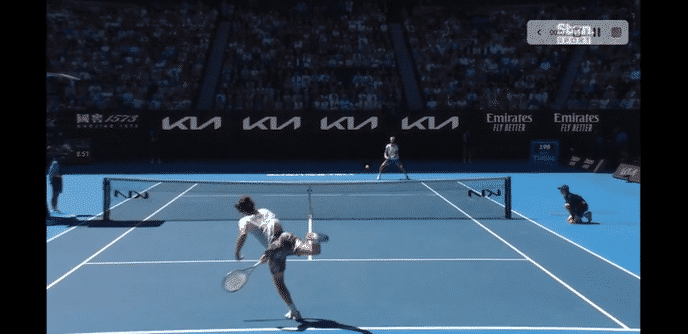



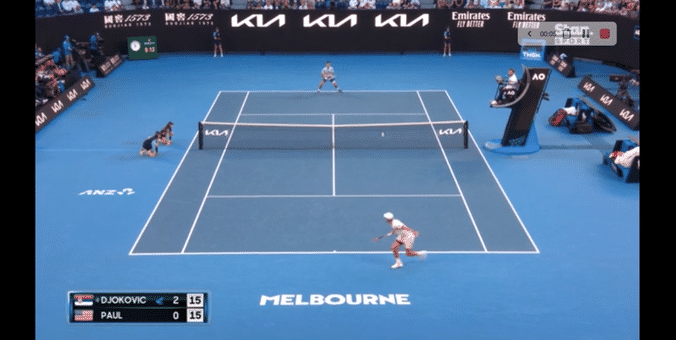



Superb analysis! I cannot wait to watch this final and really hope Tsitsipas brings all his lessons learned!
Another interesting and informative piece!
Does the serve return graphic above actually show that Djokovic wins nearly 70% of the points when his return lands deep? (Not that he hits 70% of returns deep.)